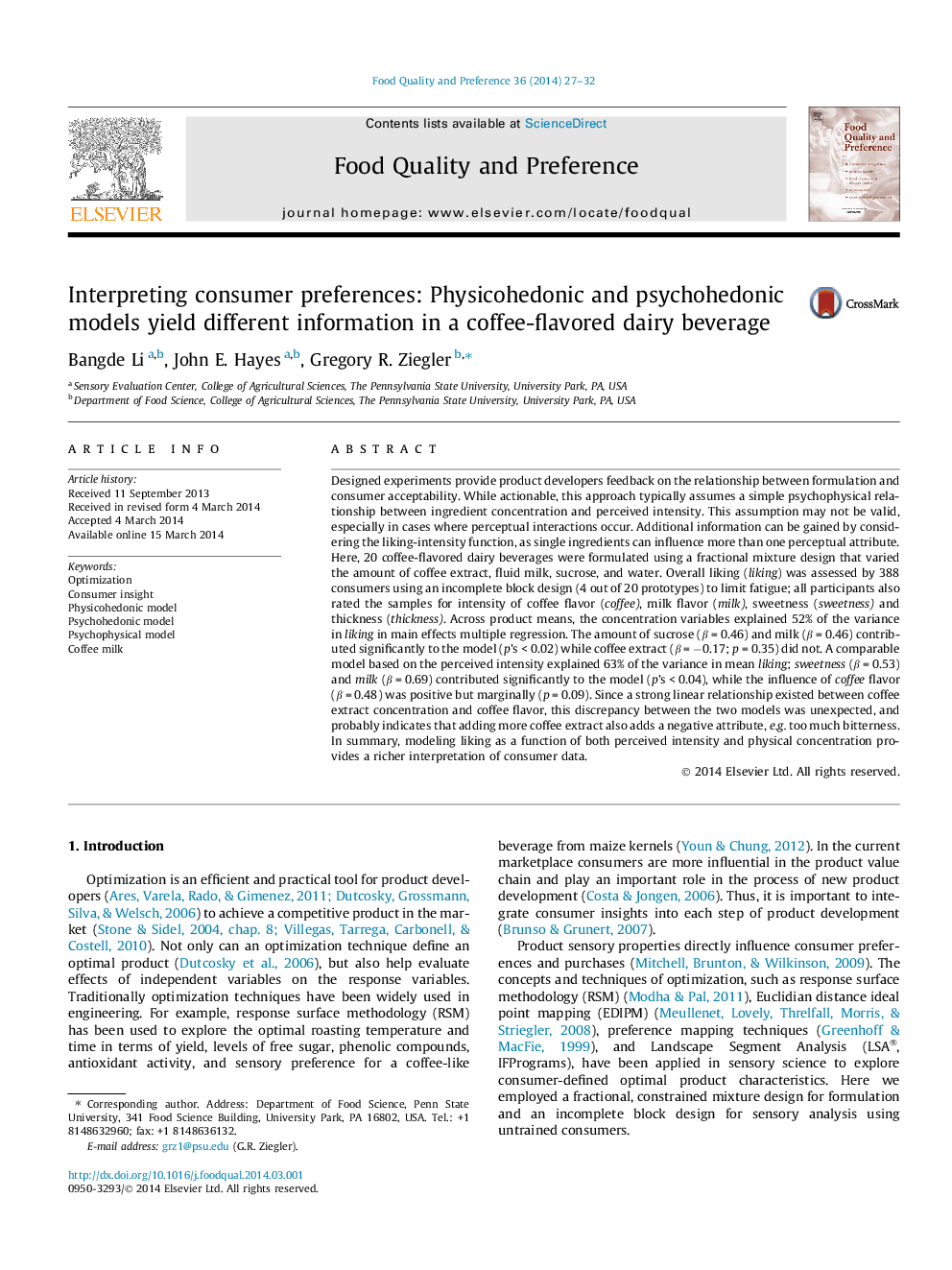| کد مقاله | کد نشریه | سال انتشار | مقاله انگلیسی | نسخه تمام متن |
|---|---|---|---|---|
| 4317142 | 1613161 | 2014 | 6 صفحه PDF | دانلود رایگان |
• Consumer insights have a critical role in the process of product development.
• A psychohedonic model was better than physicohedonic model for predicting liking.
• Psychophysical models help to interpret physicohedonic and psychohedonic models.
• Consumer preference is better understood by considering all models simultaneously.
• Coffee extract is a complex ingredient producing several sensory perceptions.
Designed experiments provide product developers feedback on the relationship between formulation and consumer acceptability. While actionable, this approach typically assumes a simple psychophysical relationship between ingredient concentration and perceived intensity. This assumption may not be valid, especially in cases where perceptual interactions occur. Additional information can be gained by considering the liking-intensity function, as single ingredients can influence more than one perceptual attribute. Here, 20 coffee-flavored dairy beverages were formulated using a fractional mixture design that varied the amount of coffee extract, fluid milk, sucrose, and water. Overall liking (liking) was assessed by 388 consumers using an incomplete block design (4 out of 20 prototypes) to limit fatigue; all participants also rated the samples for intensity of coffee flavor (coffee), milk flavor (milk), sweetness (sweetness) and thickness (thickness). Across product means, the concentration variables explained 52% of the variance in liking in main effects multiple regression. The amount of sucrose (β = 0.46) and milk (β = 0.46) contributed significantly to the model (p’s < 0.02) while coffee extract (β = −0.17; p = 0.35) did not. A comparable model based on the perceived intensity explained 63% of the variance in mean liking; sweetness (β = 0.53) and milk (β = 0.69) contributed significantly to the model (p’s < 0.04), while the influence of coffee flavor (β = 0.48) was positive but marginally (p = 0.09). Since a strong linear relationship existed between coffee extract concentration and coffee flavor, this discrepancy between the two models was unexpected, and probably indicates that adding more coffee extract also adds a negative attribute, e.g. too much bitterness. In summary, modeling liking as a function of both perceived intensity and physical concentration provides a richer interpretation of consumer data.
Journal: Food Quality and Preference - Volume 36, September 2014, Pages 27–32
